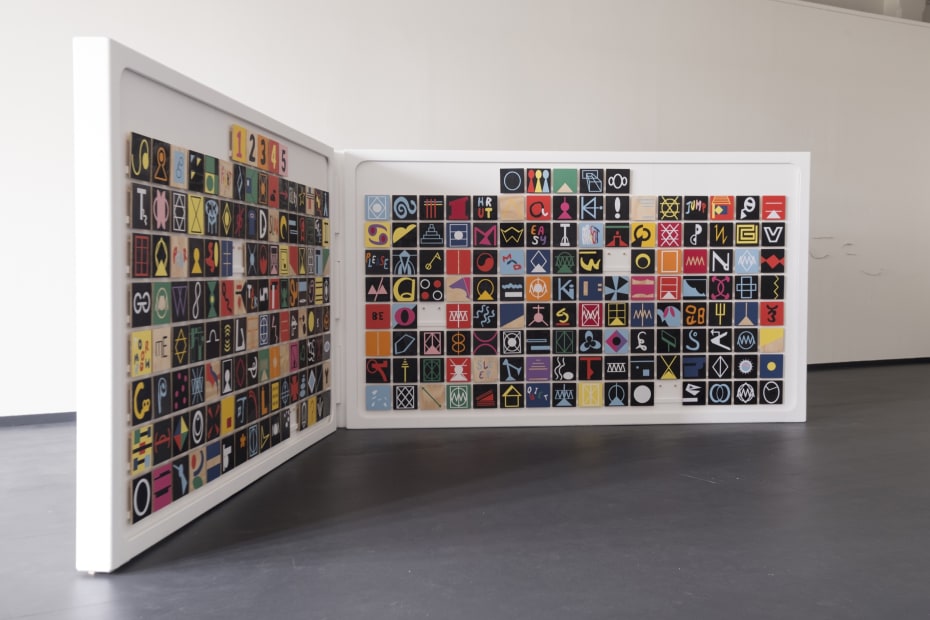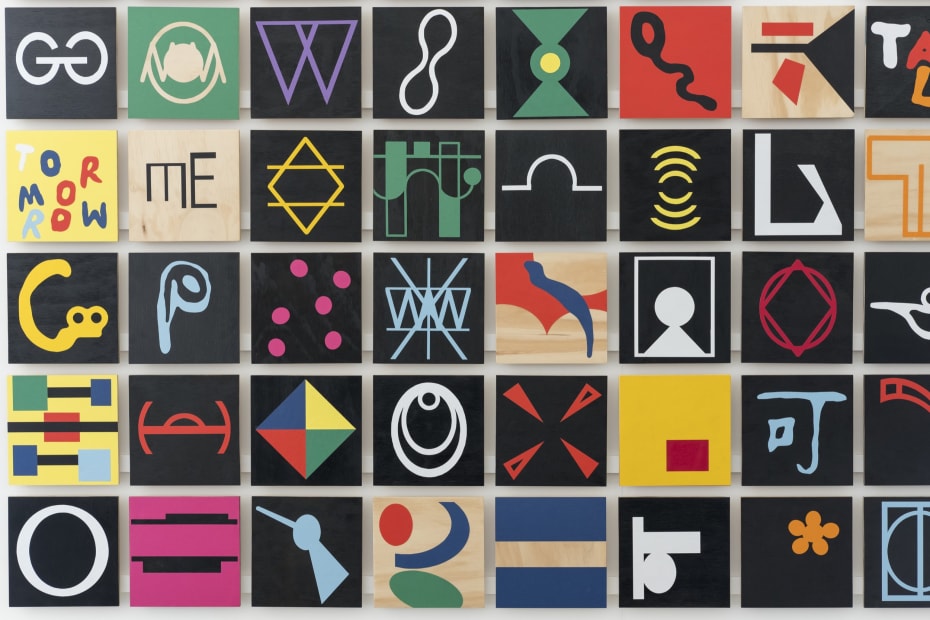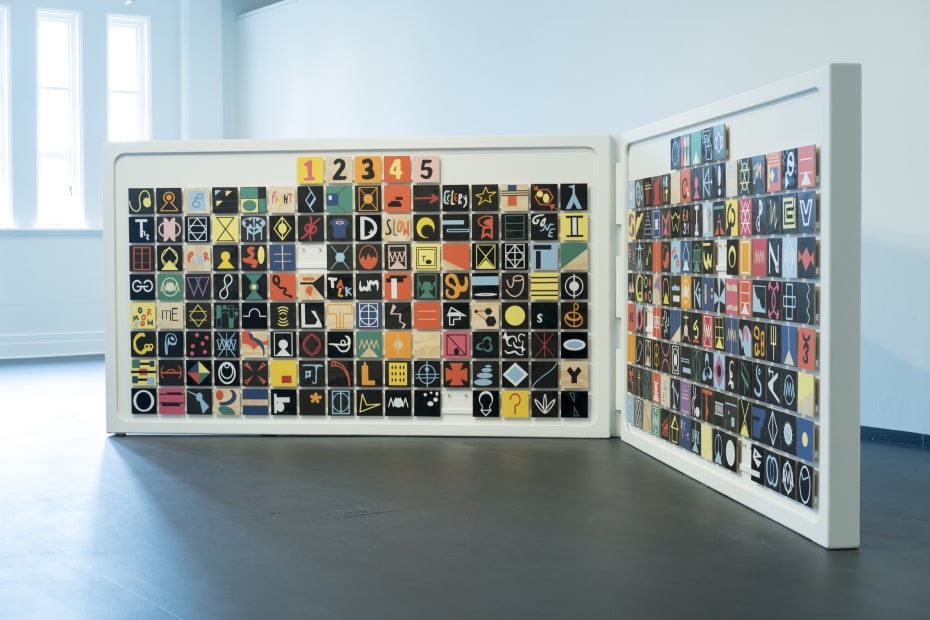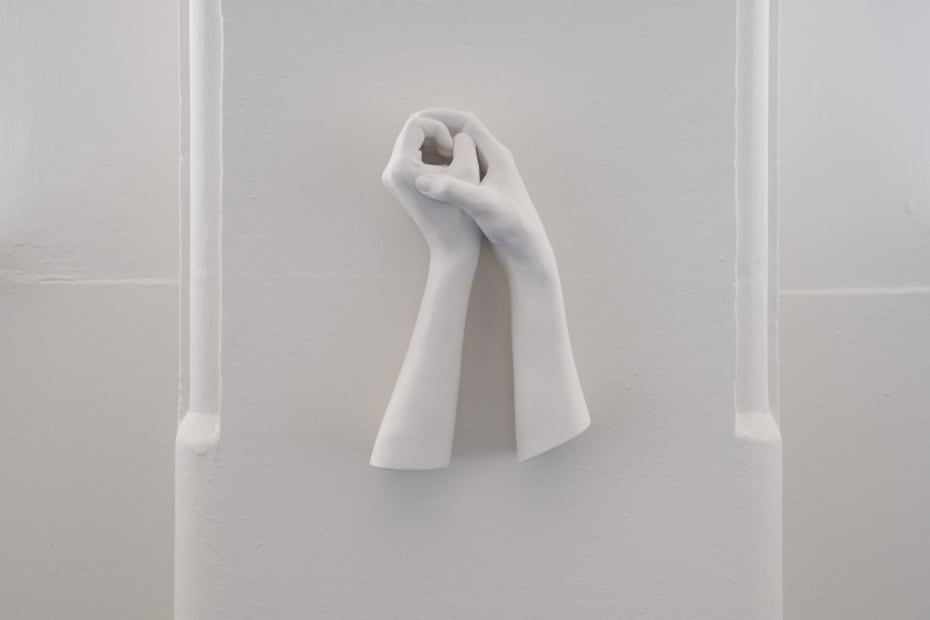This second chapter of Amalia Pica’s please open hurry presents a series of new commissions exploring the techniques, potential, and shortcomings of communication between different species. The project is a continuation of Pica’s longstanding consideration of language, comprehension, misunderstanding, translation, and listening. This trajectory takes on a new subject through her 2014 experience observing the lives and single tool use of chimpanzees in Nigeria, as part of the Gashaka Primate Project artistic residency. Since that initial research, Pica deepened her understanding of communication with and between the Great Apes through a residency at the Boulder Museum of Contemporary Art, Colorado, where she connected with leading specialists.
It is apparent that in the scientific community, language experiments with non-human species are controversial and have seen a notable shift towards general cognition. This is in part due to philosophy and ethics—such as understandings of personhood and animal rights—as well as challenges to the definition of language, which continues to fuel debate on the capacity for humans and other Great Apes to communicate with one another.
Apes have demonstrated remarkable cognition and communication skills, such as through sign language and mastering the use of complex pictorial symbols, to demonstrate their understanding of a range of human commands and objects. These studies, however, remain inconclusive, in part due to the shifting goal post of what constitutes language. And as dedicated as the researchers are to their subjects, they rely on captivity and the imposition of a system, rather than observation of apes’ spontaneous behaviour.
Pica’s research has evolved into a number of works: three video works created with filmmaker Rafael Ortega in 2017 and 2018, a choreographed dance with Brisbane-based dancer Michael Smith, three groups of cast objects, and a large-scale sculpture featuring 254 handmade collages.
The first room of the exhibition combines three of the 2017 works responding to Pica’s time in the forests of Nigeria. The two video works and sculpture consider the conditions of observation, between humans and their non-human subjects, and between species who inhabit the same space on an ongoing basis: Megaponera analis (African predatory ants) and Pan troglodytes ellioti (chimpanzees). A single cast silver stick bridges the relationship between the chimpanzees depicted in the video and the ants moving across the monitor: it is an ape tool transformed by the artist, fittingly, into silverware.
The second gallery space of please open hurry includes three new commissions that further build on devices and techniques used in language experiments with Great Apes, as well as an ode to spontaneous intentional gesture use across different species of apes, independent of human attention. They take inspiration from distinct approaches of primatology developed over the past half-century: from sign-language (for example, “please open hurry” is a simple sentence uttered by Washoe, one of the signing chimps), to the development of lexigrams (a graphic language, also known as Yerkish in honour of Robert Yerkes, who founded one of the first primate research centres in the United States) that test comprehension, to observation-focussed approaches to understanding how animals communicate without another without human interference.




